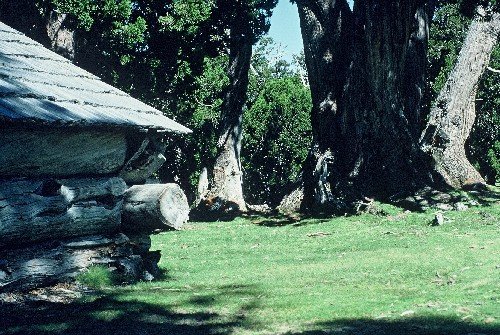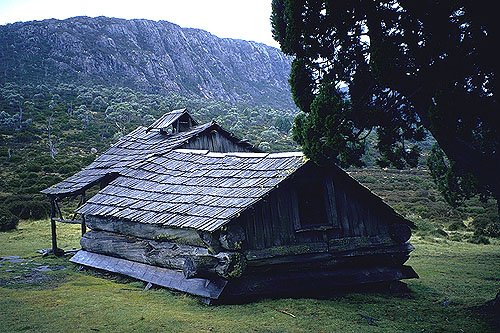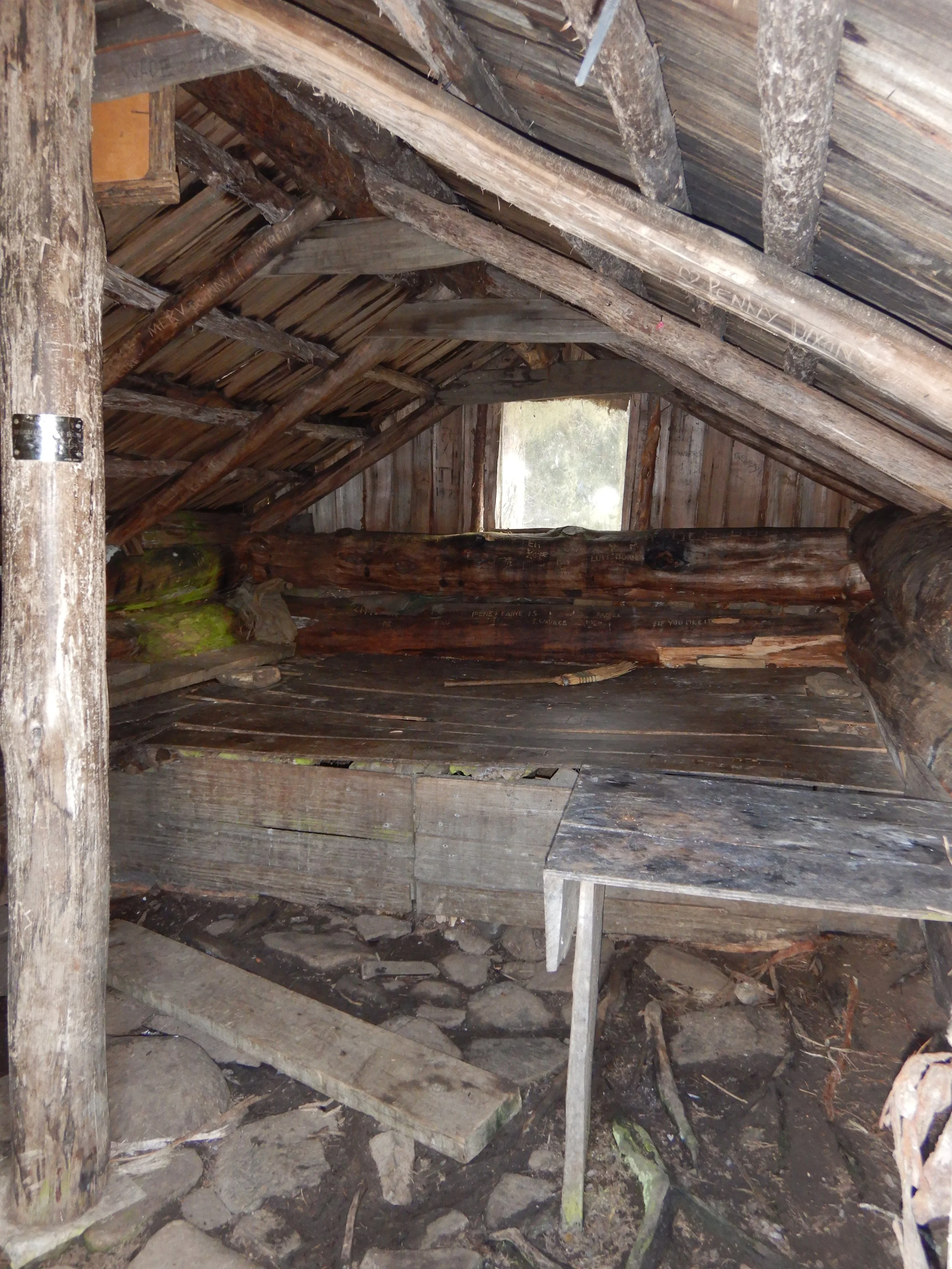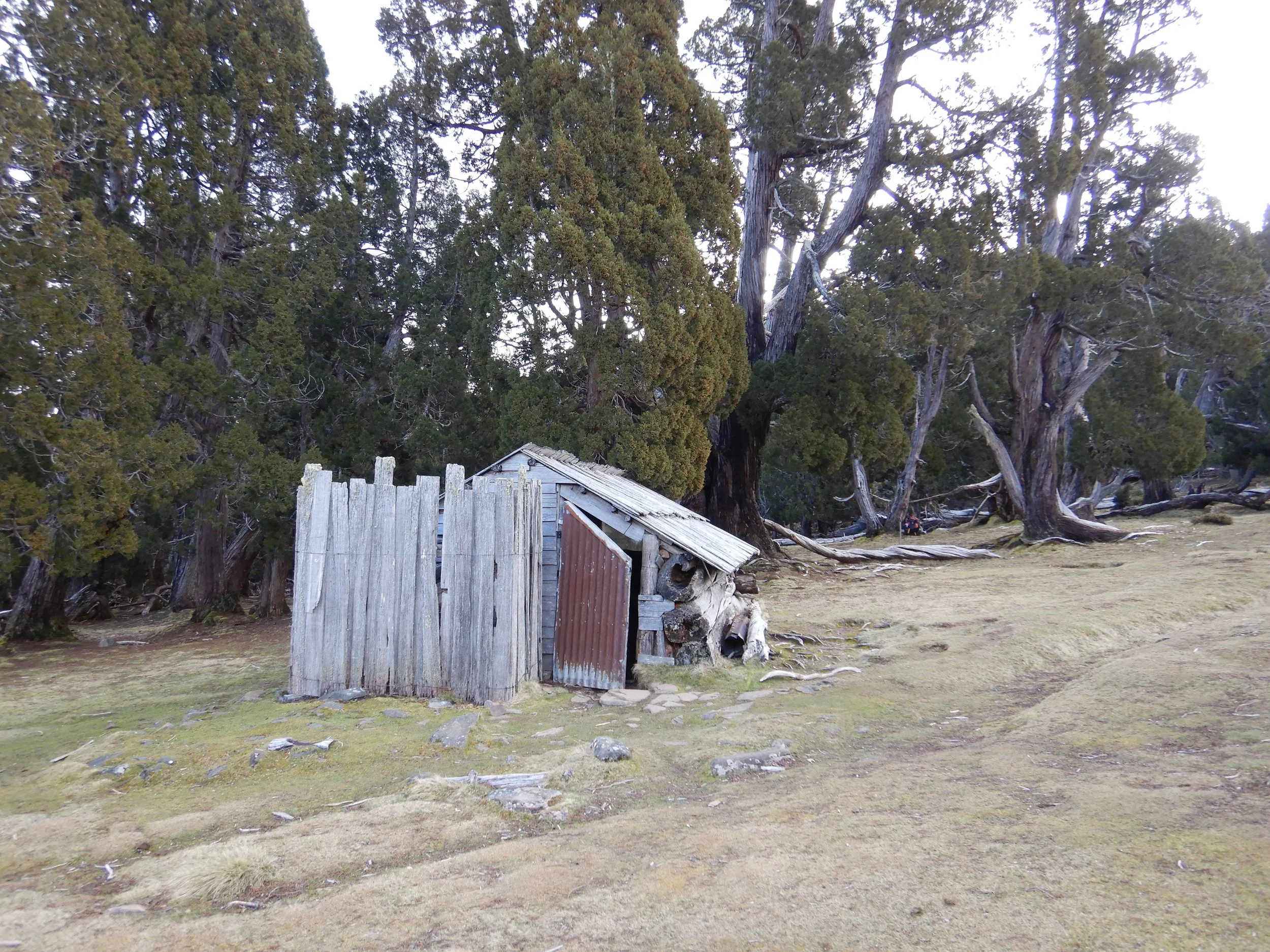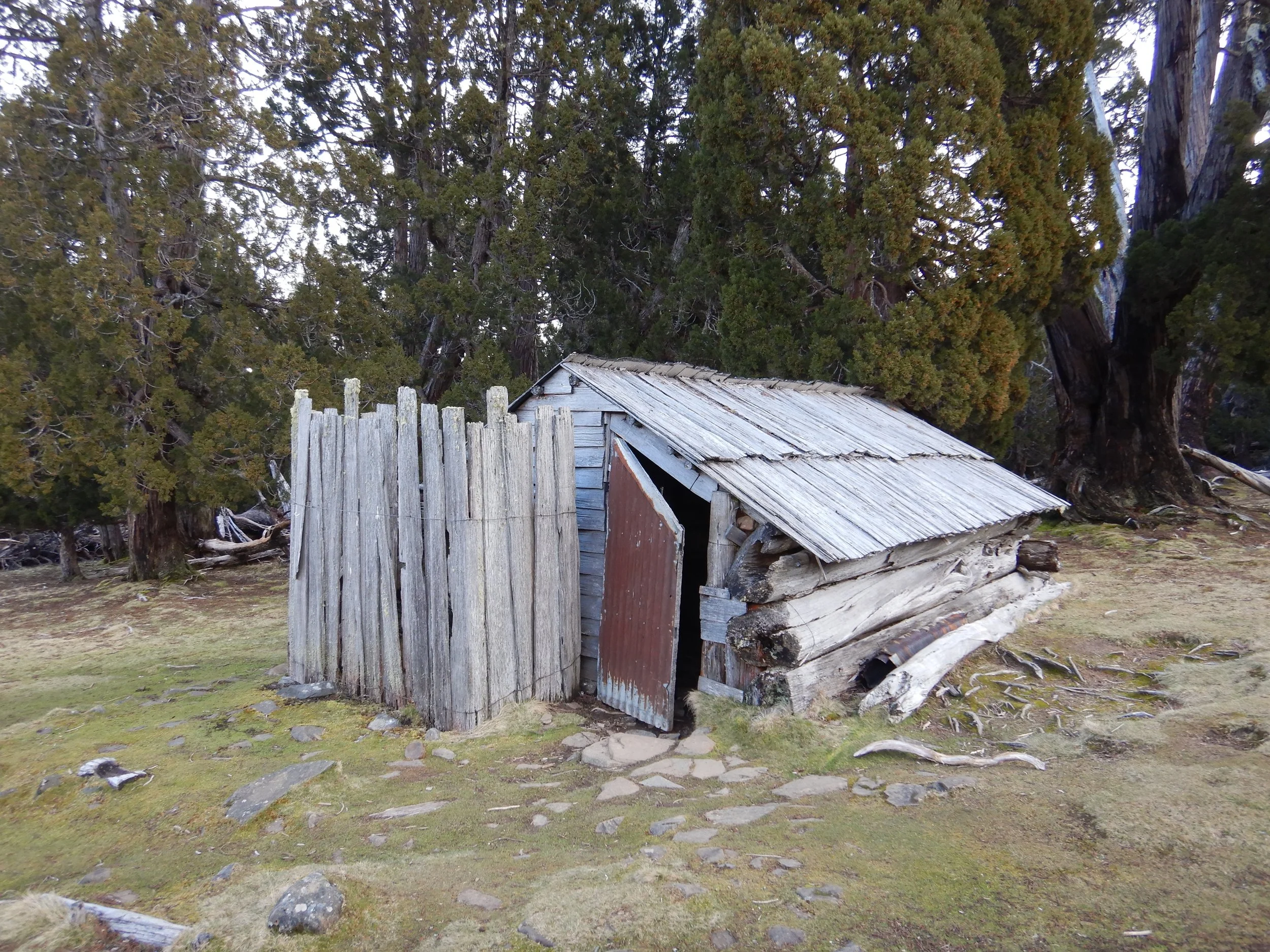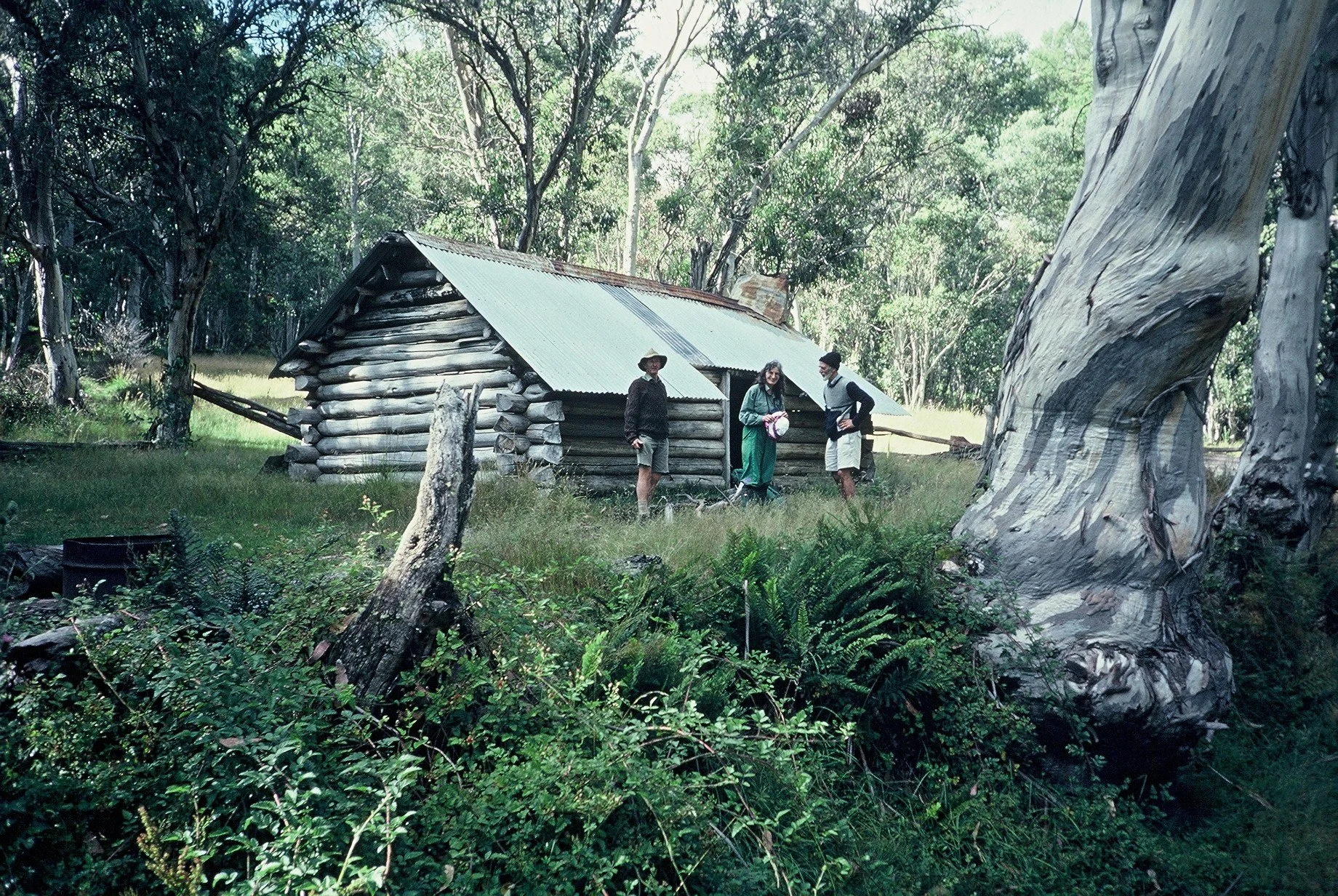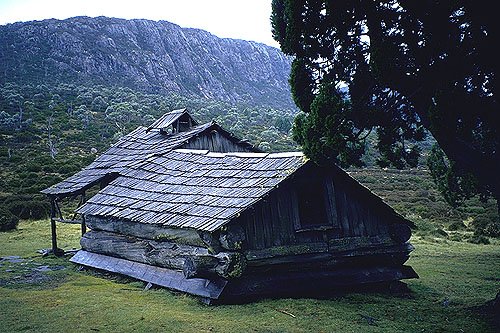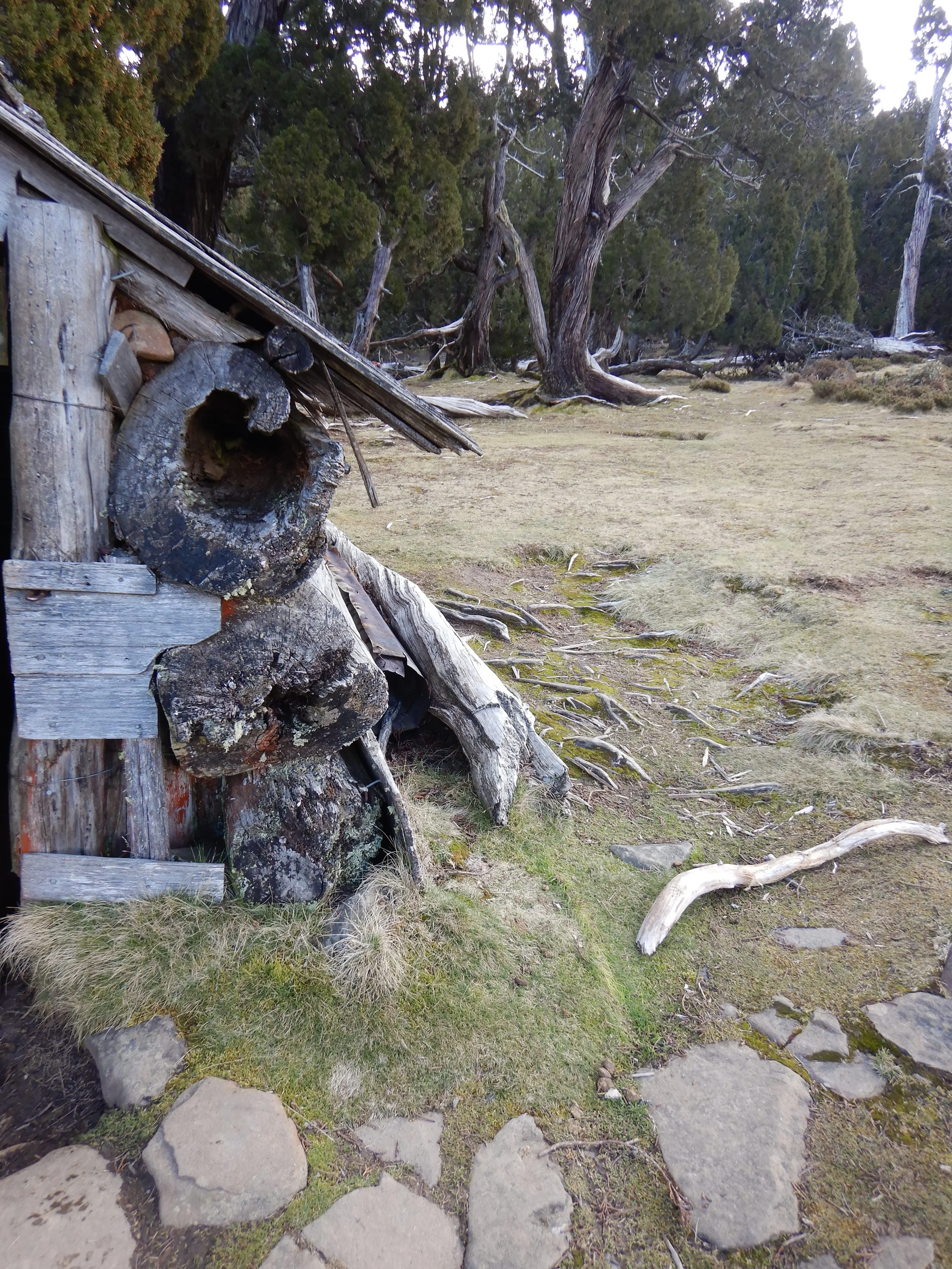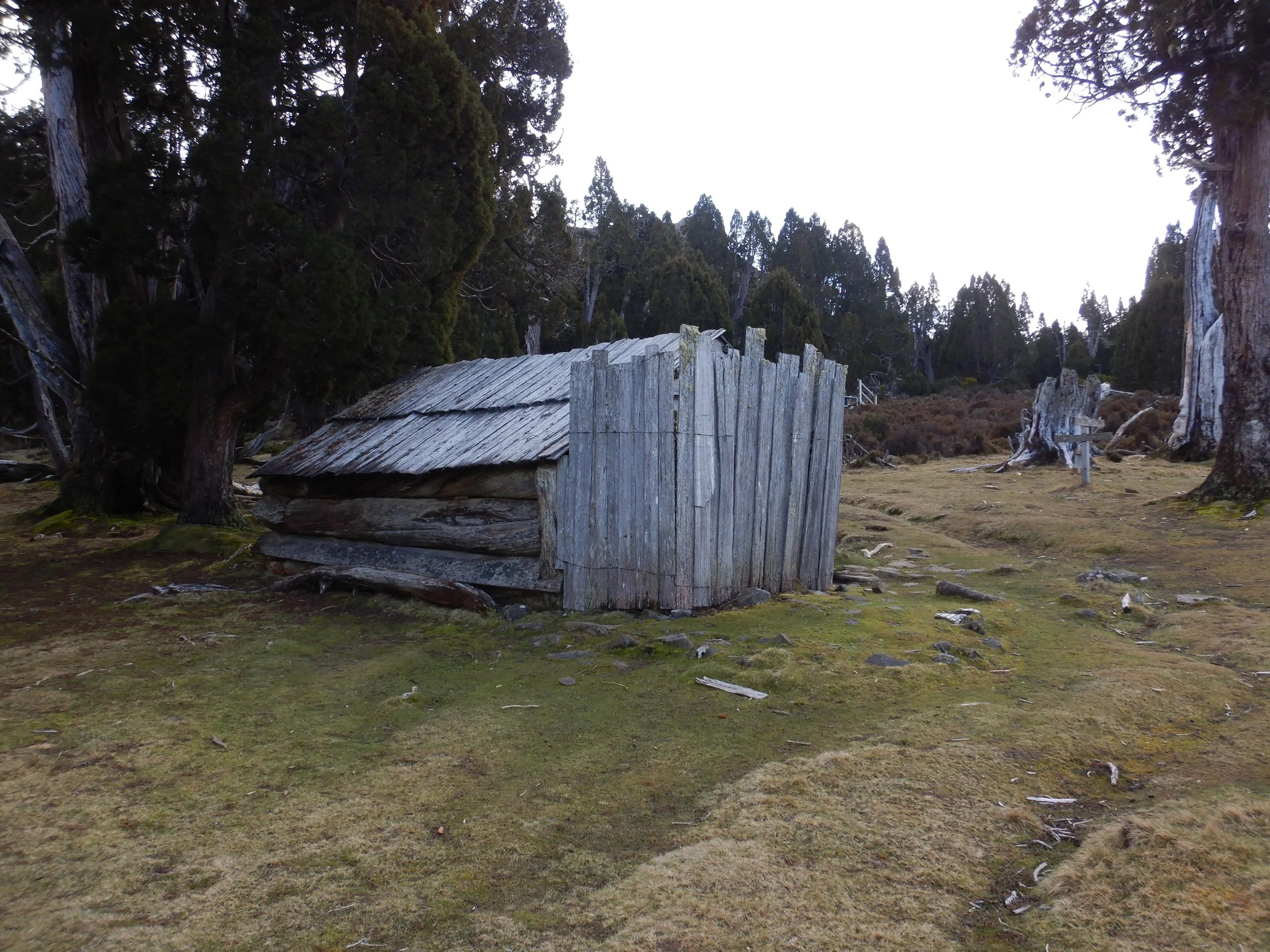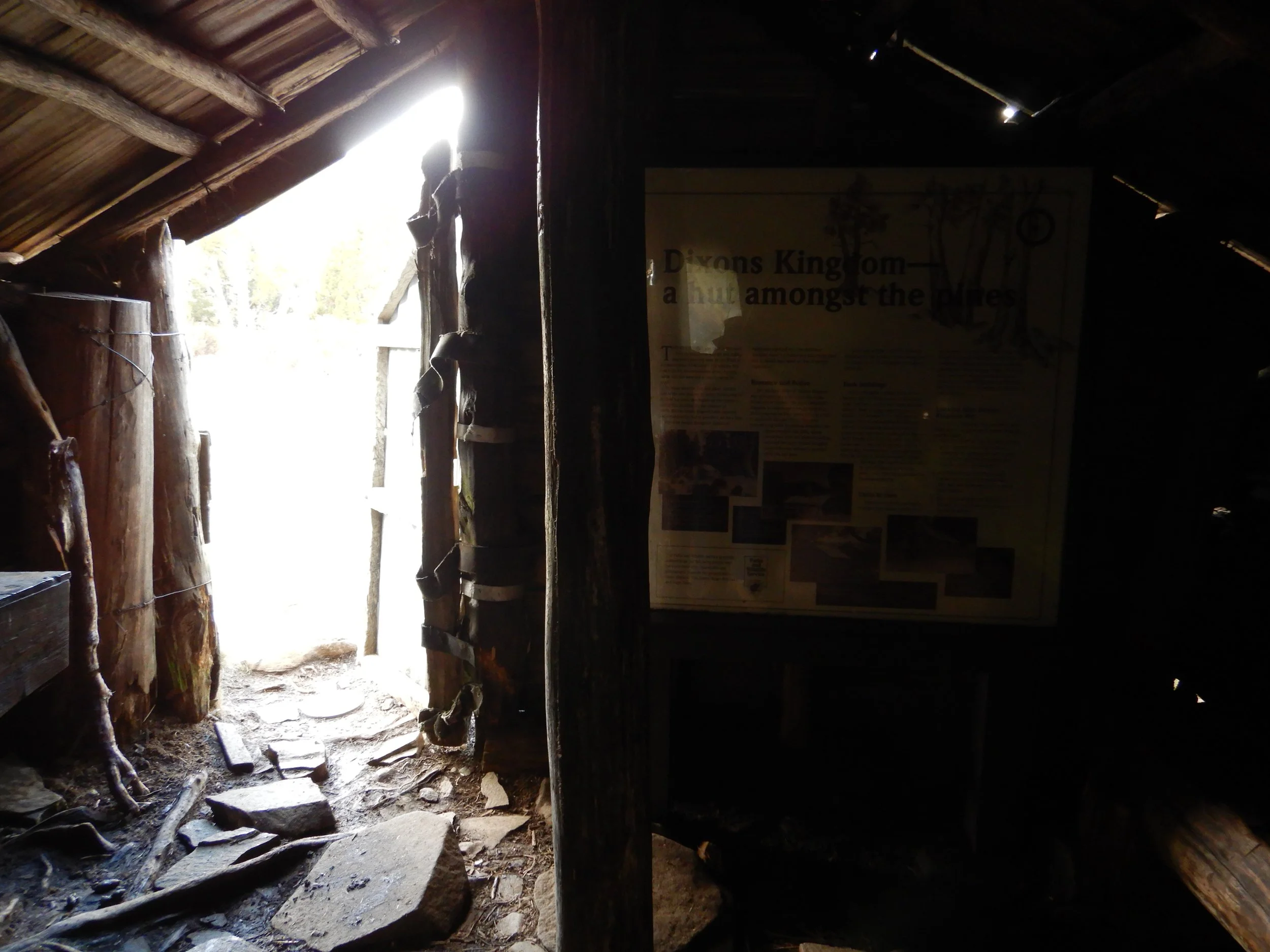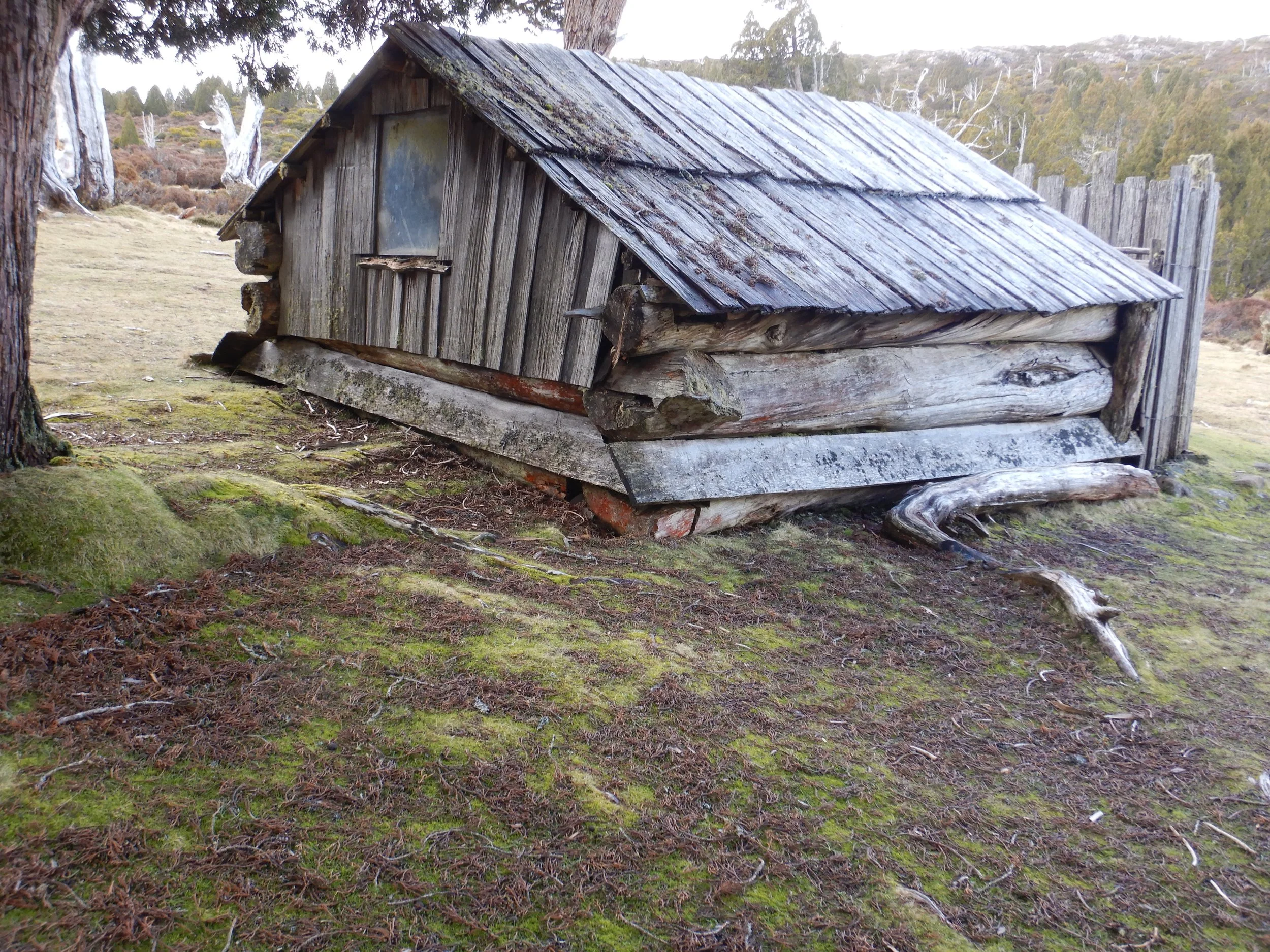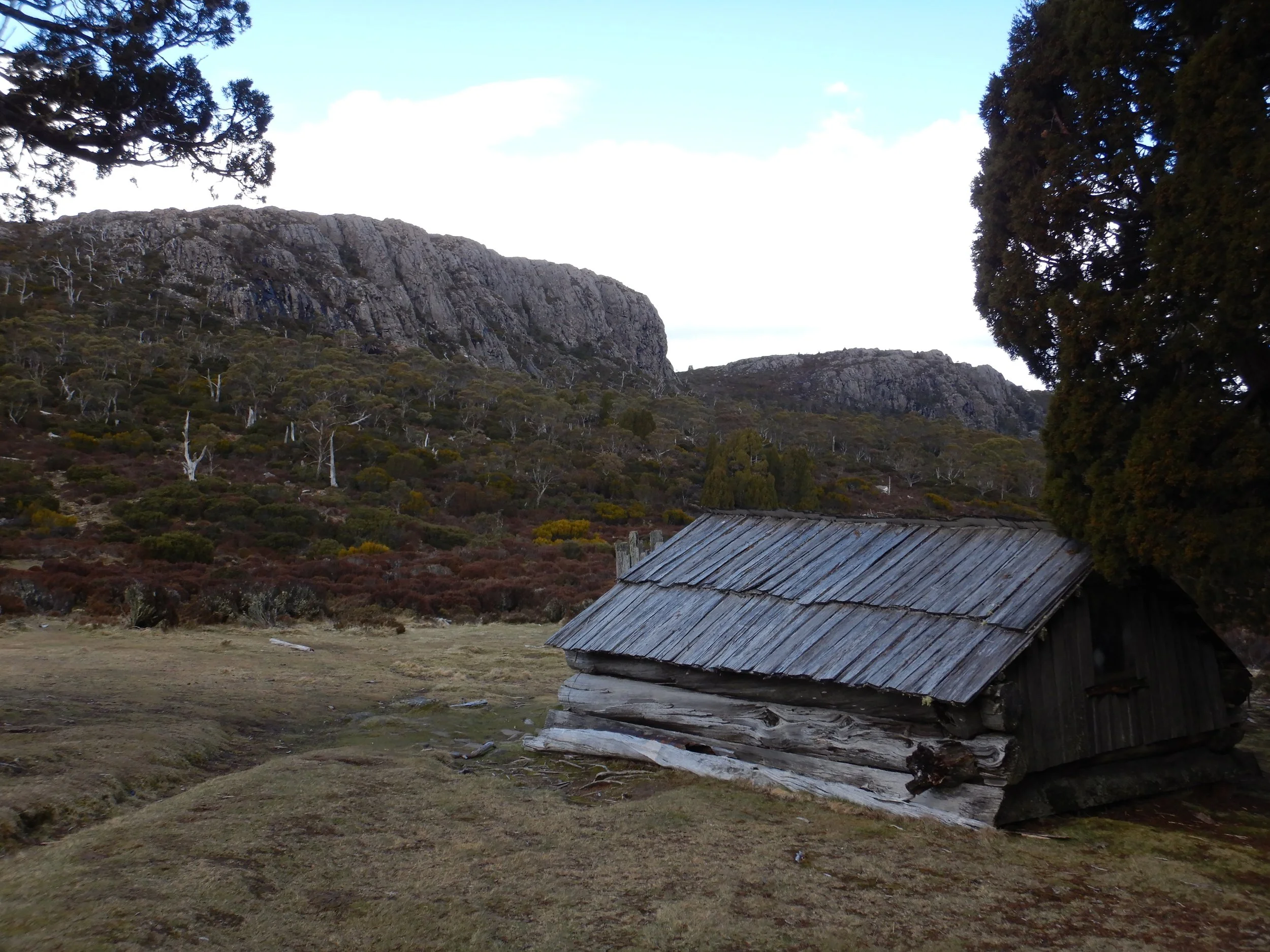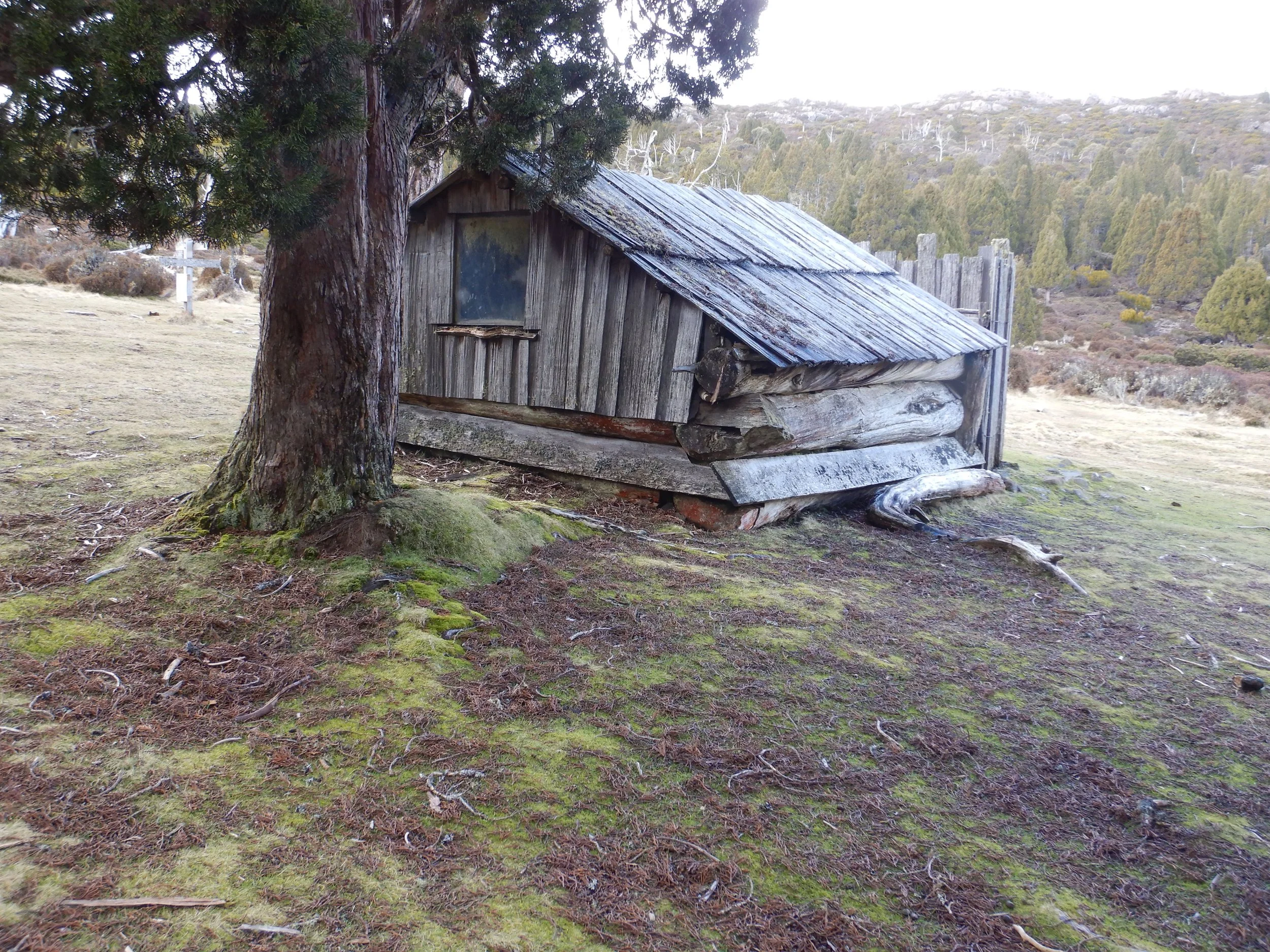Dixons Kingdom
Photograph courtesy of Jim Moon © 1998, including the first two below. Others by Olaf Moon 2022.
Known as The walls of Jerusalem Hut or Dixons Kingdom.
Located in the Walls of Jerusalem National Park, on the southern side of The Temple, and surrounded by the Wailing Wall and East Wall. It is shown at 1200m on the Ada map at GR425688.
Brief History
This hut has been well researched, with studies by David Travalia and David Collett in 1993, another by Michael Jones in 1998 plus the most recent conservation study by Ian Terry in October 2003. The hut has no heritage listing.
This area was originally inhabited by the Palawa aborigines, in particular the Big River and North Tribe.
The first European visitor was probably the bushranger, Mathew Brady in 1820, but the first formal visit was by surveyor Jorgen Jorgenson in September 1826, representing the Van Diemen's Land Company.
The area around the Walls of Jerusalem was then grazed from 1840 to 1972. Frederick Pattersons hut at Lake Sidon is shown on maps in 1848. During that time, the hut was built by cattleman Reg Dixon along with his son Bobby, and Harry Donohue, following the original construction of a slab stable nearby by the the Bowman Family. The Bowman hut was a burnt out ruin when Reg built his hut. A third hut, built by the Ritters stood at the Wailing Wall until it too was burnt.
Reg obtained the lease in 1947, from Charles Ritter of Meander, who leased this Lot 224 of 1500 acres originally held by Thomas Johnson from the early 1850's. Dixon also acquired 4500 acres of lease 388, and found himself the sole leaseholder in the Walls of Jerusalem, by the 1950's. Cattle illegally driven into the area in 1973 were quickly removed, and the Walls national park proclaimed in 1981. It was added to the Tasmanian World Heritage Area in 1989.
The hut is built from pencil pine logs, dragged from the nearby forest by a draft horse, the logs were filled with turf and a split paling roof attached. A stone and timber chimney were originally built at the east end. An additional shed was added, then later removed.
The name for the hut came from Reg's wife, Elsie, who had been reading Campbells Kingdom by Hammond Innes, and was struck by the similarities with the Canadian mountain hideaway.
After Reg relinquised the lease to the Crown in 1972, a filmaker, Roger Scholes instigated changes to the hut for a film, The Tale of Ruby Rose. In the end the hut was not used in the movie.
In 1980 the original chimney was dismantled and the hut was enlarged by Harold Riley. Shingles were once again added over the roof, following an intervening period where corrugated iron was used. In 1998, these changes were removed and the original format of the hut, restored.
Interestingly, Reg returned to the hut a number of times after the lease expired, indicating that it was more than the simple cattleman's shelter that had been used that way for more than 20 years.
Construction
Built as a classic log cabin, with shingle roof, and added paling section, later removed. An interim iron roof existed at one point. A single perspex window has been included in the western wall. Over the period from 1980 to 1998, many changes were made to the hut, and the associated "skin shed", which was later removed.
Caretakers - Mountain Huts Preservation Society and National Parks and Wildlife Service.
References
"Dixons Kingdom Hut - Plan of Management" Ian Terry and David Parham October 2003.
Jim Moon - pers comm.


